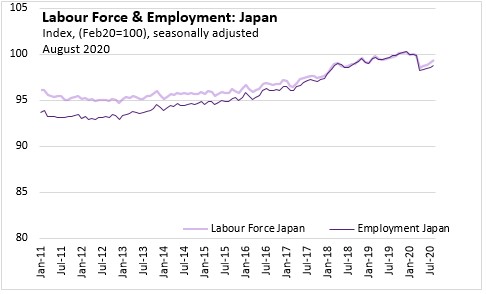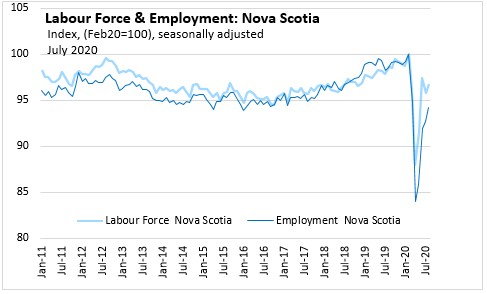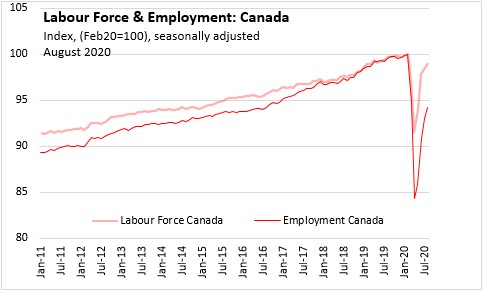The Economics and Statistics Division maintains archives of previous publications for accountability purposes, but makes no updates to keep these documents current with the latest data revisions from Statistics Canada. As a result, information in older documents may not be accurate. Please exercise caution when referring to older documents. For the latest information and historical data, please contact the individual listed to the right.
<--- Return to Archive
For additional information relating to this article, please contact:
October 02, 2020JAPAN LABOUR FORCE SURVEY, AUGUST 2020 
Japan's seasonally adjusted unemployment rate continued to increase slowly, rising to 3.0% in August from 2.9% in July. Prior to COVID-19, Japan's unemployment rate was very stable: from January 2018 to March 2020 Japan's unemployment rate had remained in a range of 2.2% to 2.5%. Japan's unemployment rate has not been higher since 2017.
The impacts of COVID-19 are apparent in Japan's labour market, but the magnitude of the shock appears to be more moderate than observed in other advanced economies. Compared to February 2020, Japan's labour force fell by 0.6% while employment declined by 1.2%.
In comparison, the impact of COVID-19 on Canada's and Nova Scotia's labour markets has been more severe. From February to August, Canada's labour force contracted by 0.9% while employment fell 5.7%. Canada's unemployment rate rose from 5.6% to 10.2%. Nova Scotia's labour force was down 3.2% while employment fell 5.8% and the unemployment rate grew from 7.8% to 10.3%.



Sources:
Statistics Bureau of Japan. Table: a-1 (Seasonally adjusted) Major items (Labour force, Employed person, Employee, Unemployed person, Not in labour force, Unemployment rate (Excel:252KB) (since Jan.1953)
Statistics Canada. Table 14-10-0287-01 Labour force characteristics, monthly, seasonally adjusted and trend-cycle
<--- Return to Archive